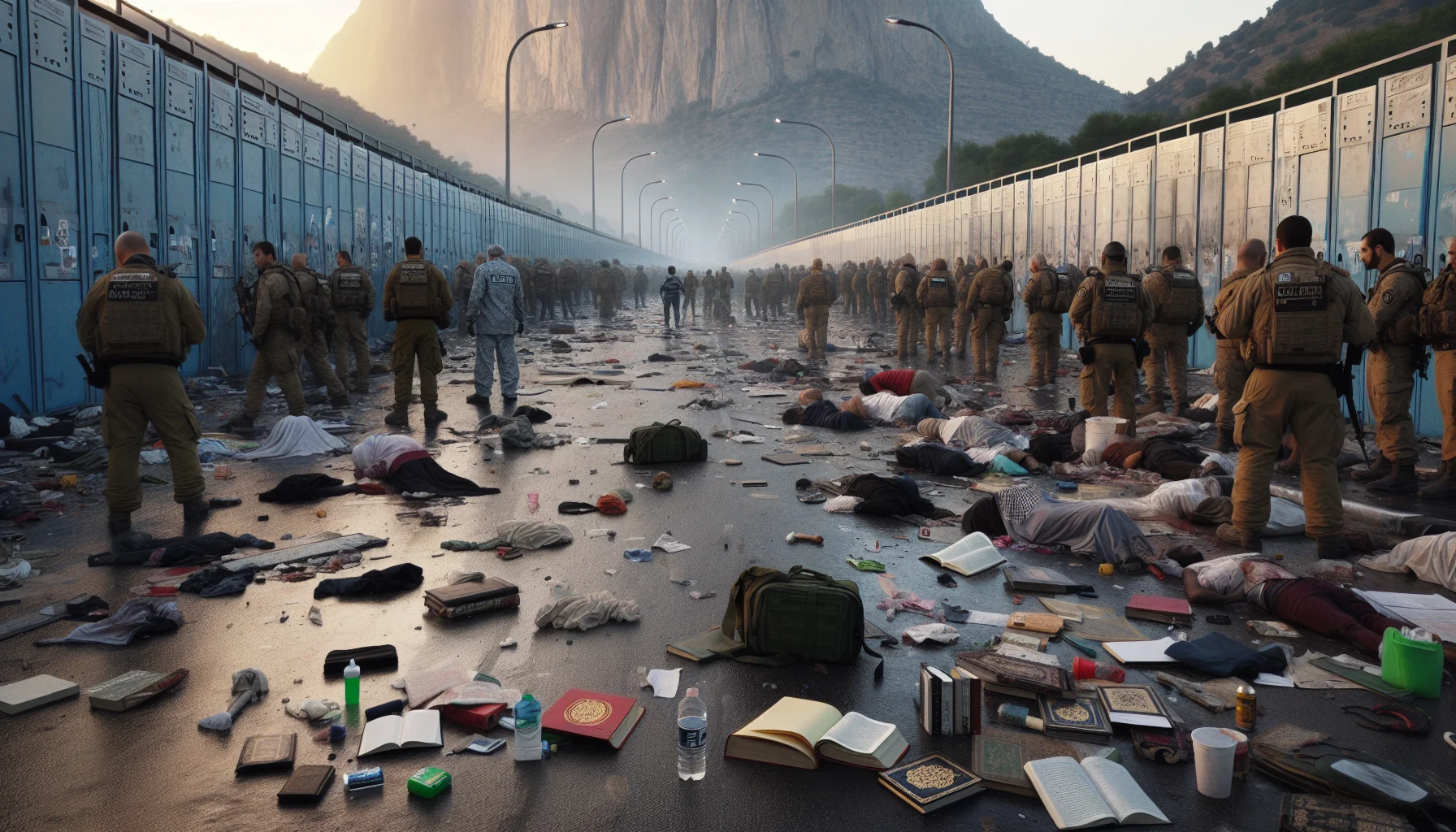
The 2021 Meron Crowd Crush
by: The Calamity Calendar Team
April 30, 2021
The Night That Shattered a Gathering of Faith
Every year, hundreds of thousands of faithful gather on Mount Meron, a sacred site in northern Israel, to celebrate the Jewish holiday of Lag BaOmer. For the devout, it’s a time-honored tradition filled with songs, fire-lit nights, and heartfelt prayers commemorating Rabbi Shimon Bar Yochai. But in the early hours of April 30, 2021, solemn echoes of joy turned to terror, and faith was met with an unthinkable reality.
Fraying Threads of Tradition and Safety
Lag BaOmer is not just a festival; it is a powerful communal expression for those who journey to Mount Meron's slopes. Yet, for years, warnings about overcrowding weaved through conversations. Concerns drifted like whispers among organizers and attendees alike — concerns that infrastructure at the site couldn't withstand the thick press of human bodies, concerns that were, tragically, not addressed in time.
While the celebration on Mount Meron is deeply rooted in the Jewish community, especially among the Haredi sect, the infrastructure woes were an open secret. The pathways were narrow, and the exits fewer than needed – a bottleneck of joyous humanity with no easy escape. This year was no different, or so everyone thought until it wasn't.
When Night Turned to Nightmare
In the shadows of an April night, around 1:00 a.m., the celebration's energy hummed through the air. Yet, trouble was brewing. The site had exceeded its intended capacity — it was a powder keg waiting to ignite. As the crowded festivities packed tightly, thousands moved through a treacherously narrow passageway, slick underfoot with metal flooring. Suddenly, the precarious slope became perilous.
People fell — a tremor amongst the pilgrims. Then, a cascade of flesh and bone — suffocating, crushing, entangling those at the bottom with those that followed, like dominoes in a ruinous dance. The stampede became an unstoppable force, and the collective cries pierced the holy night.
Emergency personnel rushed forward but found themselves trapped in a grim gridlock of bodies, hampering their rescue efforts. The mountain of people not only crushed lives but underscored nature’s indifference to the ardor of faith when faced with human chaos.
Thanks for subscribing!
A Nation in Mourning
News of the disaster spread rapidly, saturating the air with disbelief and grief. The aftermath was harsh — 45 lives lost, each one a world unto themselves vanished in the blink of an eye. Over 150 others nursed injuries that ranged from bruised flesh to shattered spirits. Israel declared a national day of mourning, and wreaths of sorrow draped across a community that began to question whether such gatherings were retreats of spiritual ascent or precarious risks.
There was more than grief; there was anger. Anger at a system that failed to protect its own, at insufficient infrastructure that jeopardized lives, at ignored warnings. Families banded together, some seeking justice, others answers. Legal actions were initiated, pressing for sweeping reforms and guarantees that past mistakes would not dictate future tragedies.
Scrutinizing Safety and Seeking Solutions
Investigations tore at the seams of oversight. Overlapping jurisdictions and disjointed management became a glaring focus under harsh scrutiny. Committees were assembled to piece together the timeline and the flurry of decisions leading to this darkest hour. Promises were made — commitments to reform and infrastructure renewal, to regulate attendance numbers, and to prioritize crowd safety henceforth.
Every mourner's tear was a reminder. Every prayer whispered among the bereaved called for change. And slowly, yet surely, safety measures began their gradual ascent. Infrastructure awaited reinforcement, guided by lessons written not in textbooks but in emergency reports.
A Legacy in the Balance
Now, the memory of those crushed under the weight of tradition casts a long shadow. As cultural practices merge with hard-learned lessons, Mount Meron stands transformed. Caution lives as vibrantly as tradition now, inhabiting the same space. The legacy of Lag BaOmer continues, tempered with the knowledge of what once was and what could be if wisdom lords over negligence.
The Meron disaster serves as a poignant reminder that spiritual refuge and reverence demand, above all, the resolve to ensure that celebration never trumps safety. As dawn breaks on new festivities, Mount Meron's hallowed grounds are a symbol — not of a fallen past, but of renewed hope that holds close the promise of safety and the sanctity of life.
Stay in the Loop!
Become a Calamity Insider and get exclusive Calamity Calendar updates delivered straight to your inbox.
Thanks! You're now subscribed.